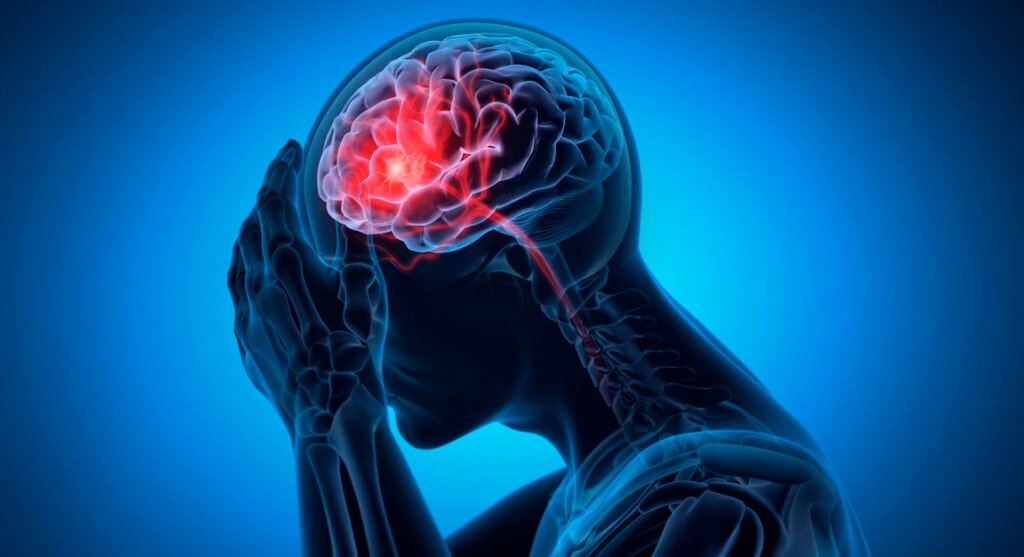Introduction: Understanding Stroke and Its Impact
Stroke is one of the leading causes of death globally, claiming approximately 5.5 million lives annually. It occurs when the central nervous system is damaged due to a vascular problem, either from a blockage in blood flow, known as ischemic stroke, or from a ruptured blood vessel, called a hemorrhagic stroke. While strokes can affect anyone, certain vascular risks significantly increase the likelihood of experiencing a severe stroke rather than a mild one. Researchers and healthcare professionals emphasize that managing these risks is crucial for preventing life-threatening complications and improving overall cardiovascular health.
Vascular Risks Linked to Severe Stroke
Research consistently shows that some vascular risks have a stronger association with severe stroke compared to milder forms. Hypertension, atrial fibrillation, and smoking are among the most significant contributors. High blood pressure affects nearly half of the adult population in the United States and is often underrecognized as a serious threat. Chronic hypertension damages the heart’s tissue and conduction system, increasing the likelihood of irregular heart rhythms and potentially severe strokes.
Atrial fibrillation, an irregular heartbeat, can arise from long-standing hypertension, obesity, or other cardiovascular conditions. This arrhythmia increases the risk of blood clots forming in the heart, which can travel to the brain and trigger a severe ischemic stroke. Smoking, including both tobacco and marijuana smoke, introduces toxins that promote blood clot formation, arterial damage, and chronic inflammation. Air pollution also contributes similarly to vascular damage, further raising stroke risk.
Other modifiable risks include obesity, elevated cholesterol, diabetes, and a sedentary lifestyle. These factors not only increase the likelihood of a stroke but are also strongly linked to more severe outcomes when a stroke occurs. Evidence suggests that individuals who actively manage these risk factors experience fewer complications and better recovery outcomes.

Symptoms of Stroke and Early Recognition
Recognizing stroke symptoms promptly is critical because the efficacy of treatment depends on how quickly a patient receives care. Early signs of stroke can include sudden numbness or weakness in the face, arms, or legs, particularly on one side of the body. Patients may also experience difficulty speaking, slurred speech, vision changes, confusion, loss of balance, and severe headaches with no known cause.
The American Heart Association recommends using the FAST acronym to identify a stroke. Facial drooping, arm weakness, speech difficulty, and the urgency of time in seeking immediate medical care are essential indicators. Immediate intervention can reduce long-term disability and improve survival rates.
Children and younger adults are less frequently affected, but the elderly and those with pre-existing vascular conditions face the highest risk. Early recognition, coupled with rapid transport to a hospital capable of advanced stroke care, remains the most effective strategy to minimize damage.
How Vascular Risks Affect Stroke Severity
Severe strokes often result from a combination of uncontrolled vascular risks. High blood pressure exerts constant pressure on arteries, causing them to weaken or develop blockages over time. Smoking exacerbates this effect by inflaming blood vessels and increasing clot formation. Atrial fibrillation enables clots to travel directly to the brain, which can trigger a severe ischemic stroke.
Studies show that among patients with stroke, those who present with multiple vascular risk factors are more likely to experience severe neurological deficits, prolonged hospital stays, and long-term disability. In contrast, patients with well-managed blood pressure, no smoking history, and regular cardiovascular monitoring generally have milder strokes and better recovery potential.
Preventing Stroke Through Lifestyle Changes
Prevention is the most effective approach to reducing stroke risk. A plant-based diet rich in fruits, vegetables, and whole grains can lower cholesterol and support healthy blood pressure. Limiting sodium intake, avoiding processed foods, and maintaining a balanced weight further protect against vascular damage.
Regular physical activity is essential for cardiovascular health. Exercise not only helps maintain a healthy weight but also reduces stress, lowers blood pressure, and improves heart function. Individuals who exercise regularly have a 25 to 30 percent lower risk of stroke compared with those who lead sedentary lifestyles. Stress reduction, adequate sleep, and avoiding harmful substances like tobacco and excessive alcohol also play a crucial role in minimizing vascular risks.
Medical management of high-risk individuals may include antihypertensive medications, anticoagulants for atrial fibrillation, and cholesterol-lowering drugs. Regular health screenings are critical to detecting risk factors before they lead to stroke.
Treatment Options for Stroke
Stroke treatment varies depending on the type and severity of the incident. For ischemic strokes, clot-busting medications administered within the first few hours can restore blood flow to the brain and prevent further damage. Mechanical thrombectomy may also be used to remove large clots. Hemorrhagic strokes require controlling bleeding, reducing intracranial pressure, and sometimes surgical intervention.
Supportive care, including rehabilitation, physical therapy, and occupational therapy, is critical for recovery. Patients who receive early and comprehensive care have significantly better outcomes. Additionally, managing underlying vascular risks after a stroke reduces the likelihood of recurrence. https://www.cdc.gov/stroke

Public Awareness and Education
Education about vascular risks and stroke symptoms is essential for community health. Many adults underestimate the dangers of hypertension and atrial fibrillation, while others fail to recognize the serious consequences of smoking. Public health campaigns promoting blood pressure checks, heart health awareness, and smoking cessation programs have proven effective in lowering stroke incidence.
Health professionals encourage patients to understand their personal risk factors and take proactive steps. Early intervention and lifestyle modification are far more effective than treating stroke after it occurs. Schools, workplaces, and community centers can also play a role in educating the public about recognizing stroke symptoms and reducing vascular risks.
Conclusion: Reducing Stroke Impact Through Risk Management
Stroke remains a major cause of death and disability worldwide. However, by addressing modifiable vascular risks, including hypertension, atrial fibrillation, smoking, obesity, and high cholesterol, individuals can significantly reduce their likelihood of severe stroke. Early recognition of symptoms, rapid medical intervention, and proactive lifestyle changes form the cornerstone of stroke prevention.
Ongoing research highlights the critical importance of public awareness and preventive healthcare in reducing the global burden of stroke. Managing vascular risks not only lowers the probability of stroke but also improves outcomes for those who do experience a stroke, ultimately saving lives and preserving quality of life.




